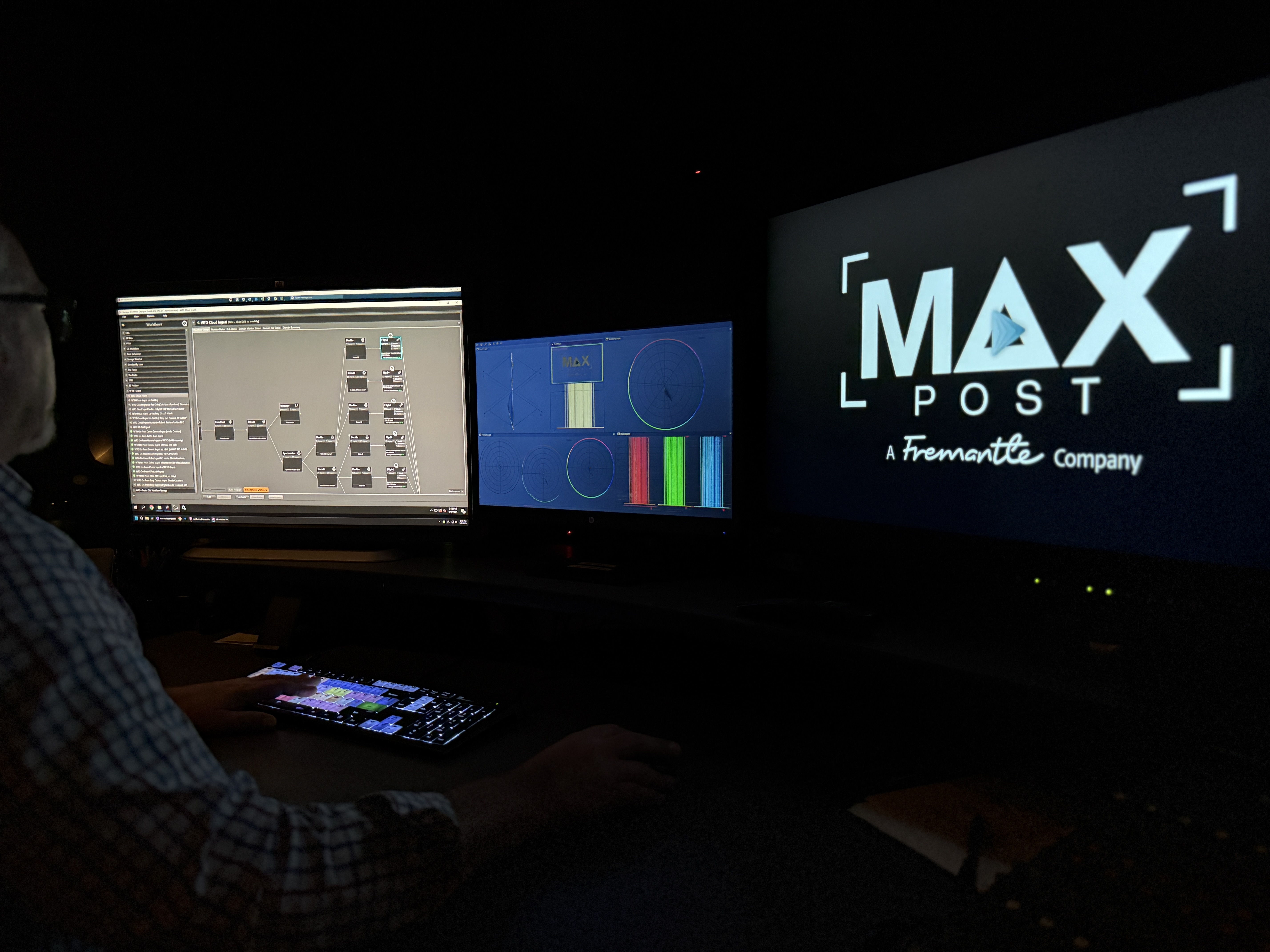Accelerating Remote Postproduction: How We Scaled Editorial With Vantage Cloud
Telestream product streamlines ingest, transcode and delivery, cutting turnaround from days to hours

BURBANK, Calif.—In postproduction, speed and reliability are everything. At MAX Post, we provide full-service editorial, transcode and ingest, color grading, sound mixing and finishing services for some of the most recognizable unscripted television and documentary programs on the air today.
Our clients expect polished results on extremely tight deadlines, and that means our workflows have to be both flexible and rock-solid—there’s no room for error.
One of our biggest recent challenges came with a client who was filming on location in Argentina, collaborating with a Los Angeles-based postproduction team. The distance alone made it impossible to move media quickly enough for same-day editorial.
Traditionally, we would have relied on digital imaging technicians to create proxies on-site using prosumer desktop tools, then upload those to our facility. That process, however, was time-consuming, resource-intensive and simply not fast enough for the pace of this particular production. In the best-case scenario, it would have taken 72 hours before editorial could even begin. Even using file acceleration tools and on-prem transcoding, we were still looking at a full day of delays. For this client, speed was critical.
Hybrid Workflows
That’s when we partnered with Telestream to build a hybrid workflow that combined our trusted on-prem infrastructure with the scalability of the cloud. The centerpiece of this solution was Telestream Vantage Cloud, which became our remote transcoding engine. We reoriented the pipeline around cloud-first ingest of camera masters, automated dual transcodes and selective, policy-driven retrieval.
Instead of relying on proxy creation in the field, the field team uploaded camera masters directly to the cloud. Vantage Cloud automatically picked up the files and performed dual transcodes, creating both high-resolution and proxy versions. The real innovation came in how we managed those outputs. Working with Telestream’s Professional Services team, we optimized the workflow so that only the low-res proxies were downloaded immediately for editorial. The high-res masters stayed in the cloud, available on demand.
Back at our facility, those proxies were rewrapped in our on-prem Vantage system and checked into our Avid MediaCentral UX environment. This allowed our editorial teams to keep working with the same familiar workflow, only much faster. When high-res files were needed for finishing or promos, etc., we would download only the needed shots. The rest were trafficked during off-peak hours to conserve bandwidth and reduce cloud egress costs.
The professional video industry's #1 source for news, trends and product and tech information. Sign up below.
This hybrid approach was a game-changer. Even extended camera clips—some as long as four hours—transcoded seamlessly and because we could spin up unlimited Vantage Cloud instances, we easily scaled the workflow to handle up to 10 TB of content per day. What used to take days was now completed in as little as six hours from upload to edit-ready media, a tenfold improvement in turnaround.
For our client, the difference was night and day. Editors in Los Angeles were cutting footage from Argentina almost in real time, and creative teams were able to collaborate across continents without delay. Not only did the solution accelerate the postproduction timeline, it also saved money by reducing unnecessary data transfers and optimizing storage.
Cloud-First Ingest
For me, the best part was how natural it felt. From the editors’ perspective, nothing about their workflow changed, except for how fast they could get the work done. Vantage Cloud integrated seamlessly with our Avid environment, so the team could focus on storytelling rather than technical hurdles.
This deployment is now our model for geographically distributed productions: cloud-first ingest, policy-driven transcode orchestration, proxy-first
distribution and selective
high-res retrieval. It gives us the best of both worlds: the scalability of the cloud combined with the stability and predictability of our established on-prem environment.
Knowing we can support aggressive schedules without compromising quality or timelines gives us the competitive edge to take on high-stakes projects, no matter the demands.
More information is available at telestream.net.
H. Scott Randol is vice president, technology and workflow, at MAX Post. He has worked in postproduction for more than 30 years and has seen MAX Post grow from its beginnings to the company it has become today, supporting a wide variety of productions from high-volume reality TV shows to feature documentaries.
